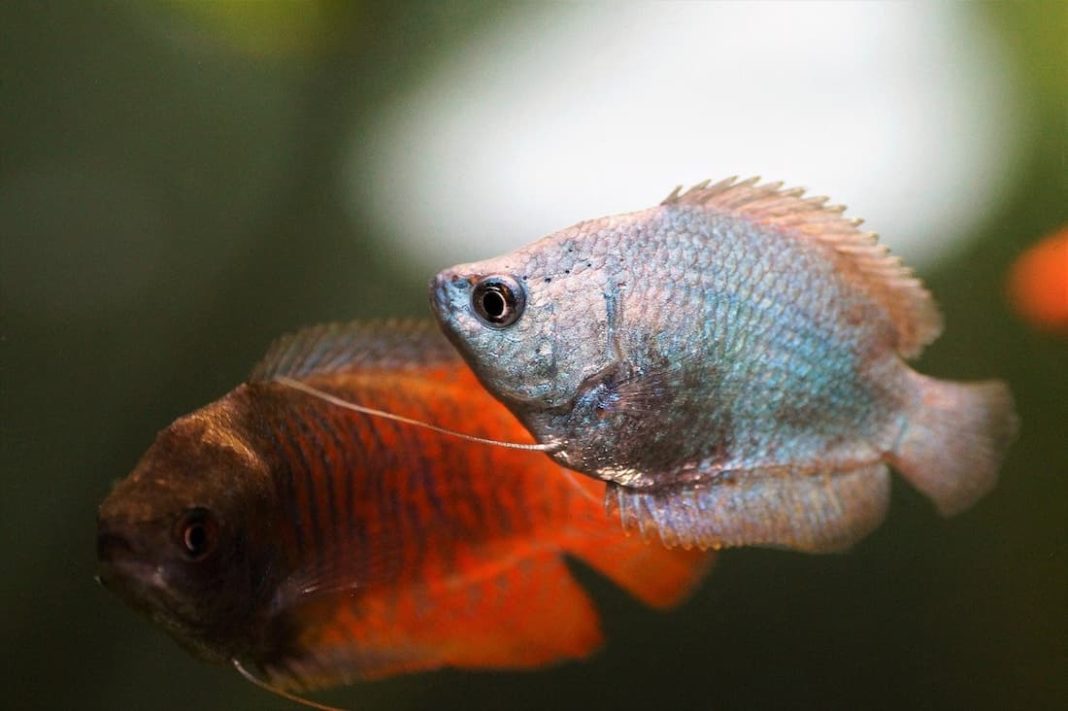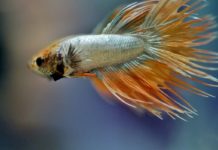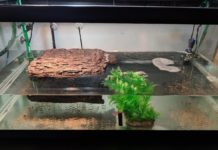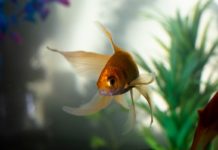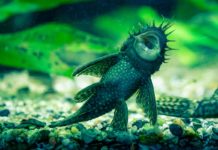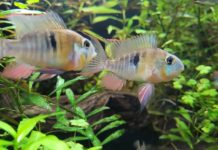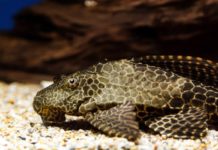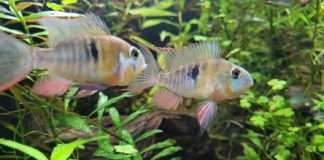Capturing your fish in a well-planted tank takes some planning, cunning and patience. Chasing your fish around the tank with a net will only result in loosening or damaging your plants while terrifying the fish. Many fish are needlessly injured during the capturing process, which can lead to stress, sickness or even death.
You can help avoid tearing up your plants and scaring the fish, by using some methods, depending upon the species and size of fish you’re trying to catch. Food is a great motivator, using it to lure the fish in all but the most difficult cases. It can become frustrating as fish that you would have considered slow and lumbering can all of a sudden turn into bolts of lightning when frightened. A good solution is to plan for their capture during the initial tank setup. For example, try reserving one corner of the tank for any live potted plants. By removing potted plants, you can have a clear capture area where it’s easier to see what you’re doing while avoiding any interference with the tank’s equipment. Refrain from feeding your fish for a day or two to ensure that they’re hungry and “motivated” to follow your lead.
Like most animals, fish are sensitive to their world becoming disturbed, so around 30 minutes prior to capture, gently remove the potted plants, placing them into a bucket filled with the same water from your aquarium.
After another 30 minutes, take a tiny pinch of flake food, placing your fingers into the water to wet the flakes. Then, press the dampened flake food against the glass in the corner of a tank, just at the water’s surface. You can then net the fish from underneath while they’re distracted eating. Be patient, avoiding any sudden moves until you’re ready to “nab” them. Luring more fish may require additional pinches of fish food and some patience.
The method mentioned above is effective for catching many of the more docile, upper-level feeding species (e.g., guppies and mollies), however swifter species (e.g., zebra danios and white clouds) typically require a more cunning approach. Using a homemade fish trap is a better way to capture these escape artists.
There are three different traps, depending upon the species and the expected length of time that the fish will be in the trap.
Catching smaller fish
If you want to catch small fish that will remain trapped for only a few minutes, you can use a large-mouthed, clear 16-ounce plastic water bottle with a half-inch hole drilled through the bottom of the bottle. Nothing helps lure fish into a trap more than a cube of juicy blood worms. After placing the worms into the bottle’s cap, screw on the cap and flood the bottle through the half-inch hole. Then position the bottle horizontally on the substrate and wait for the fish to eagerly try to get at the food. Hopefully, after a while, one after another, the fish will enter the bottle through the half-inch hole and gorge themselves. Once you’ve captured the fish, lift the bottle out of your tank with the end that you drilled out, facing up. Hold the bottle over a ready-to-use bucket, unscrew the cap, letting the fish flow into the bucket. They may try to swim back out of the drilled hole but they are rarely successful, as nothing is luring them outside of the bottle; and pouring water out will automatically create a vacuum, resulting in panic, stress and a high probability of the fish ending up trapped inside the bottle without any water.
Catching elusive fish
For more elusive species like the kuhli loach, you can use a similar bottle with a half-inch hole drilled into the end with two additional 3-by-1-inch rectangular holes cut into each side of the bottle. Aquarium sealant secures a plastic screen over the rectangular openings. Unfortunately, catching loaches and other cagey fish can take hours. In some cases, taking overnight, the screen will allow water to flow through the bottle, eliminating the potential of trapped fish suffocating.
Catching larger fish
The third trap is for larger fish and consists of a square 1-quart water bottle with the bottom cut off. Shove the bait down into the cap area and laying the bottle horizontally on top of the substrate. Try to nestle the cap end of the bottle in a plant thicket with the open-end facing outwards into a non-planted area. The fish will be preoccupied pecking at the food from the space-constricted cap, while the plants will cloak your movements. Simply cover the open end of the bottle with your hand or a net and then lift the bottle out of the tank.

